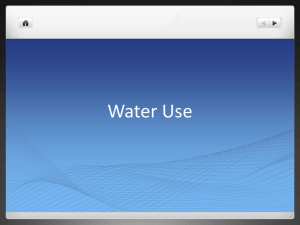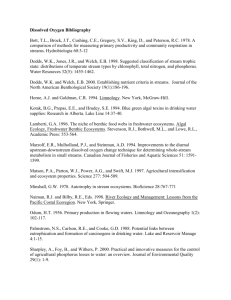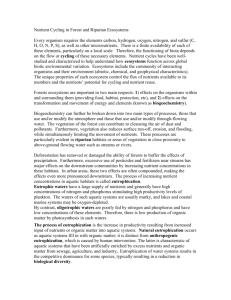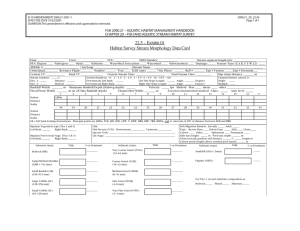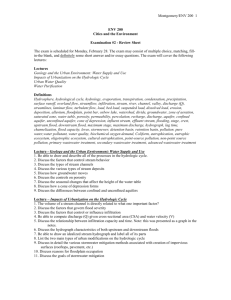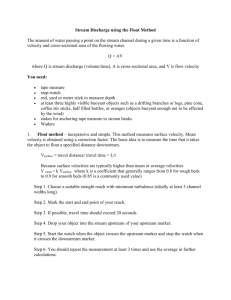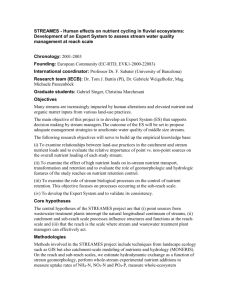Exam #4 (the Final)
advertisement
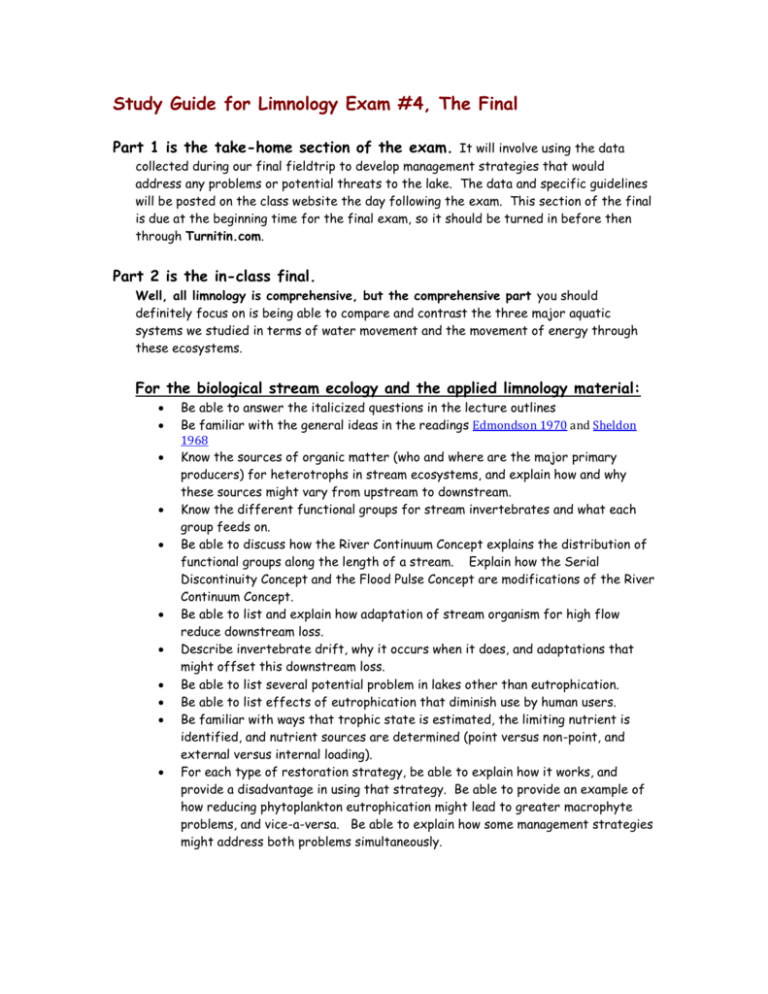
Study Guide for Limnology Exam #4, The Final Part 1 is the take-home section of the exam. It will involve using the data collected during our final fieldtrip to develop management strategies that would address any problems or potential threats to the lake. The data and specific guidelines will be posted on the class website the day following the exam. This section of the final is due at the beginning time for the final exam, so it should be turned in before then through Turnitin.com. Part 2 is the in-class final. Well, all limnology is comprehensive, but the comprehensive part you should definitely focus on is being able to compare and contrast the three major aquatic systems we studied in terms of water movement and the movement of energy through these ecosystems. For the biological stream ecology and the applied limnology material: Be able to answer the italicized questions in the lecture outlines Be familiar with the general ideas in the readings Edmondson 1970 and Sheldon 1968 Know the sources of organic matter (who and where are the major primary producers) for heterotrophs in stream ecosystems, and explain how and why these sources might vary from upstream to downstream. Know the different functional groups for stream invertebrates and what each group feeds on. Be able to discuss how the River Continuum Concept explains the distribution of functional groups along the length of a stream. Explain how the Serial Discontinuity Concept and the Flood Pulse Concept are modifications of the River Continuum Concept. Be able to list and explain how adaptation of stream organism for high flow reduce downstream loss. Describe invertebrate drift, why it occurs when it does, and adaptations that might offset this downstream loss. Be able to list several potential problem in lakes other than eutrophication. Be able to list effects of eutrophication that diminish use by human users. Be familiar with ways that trophic state is estimated, the limiting nutrient is identified, and nutrient sources are determined (point versus non-point, and external versus internal loading). For each type of restoration strategy, be able to explain how it works, and provide a disadvantage in using that strategy. Be able to provide an example of how reducing phytoplankton eutrophication might lead to greater macrophyte problems, and vice-a-versa. Be able to explain how some management strategies might address both problems simultaneously.
